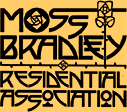“A $5,000 Home for a Family of Three”, the William P. Walker residence, 1613 Moss Ave.
by Tim Hartneck
On October 20, 1905, the following squib appeared in the Peoria Herald Transcript: “William Penn Walker has completed during the year a fine frame and plaster house in Moss avenue, costing $11,000. It is without question one of the mostartistic houses in Peoria. Mr. Walker associated with Reeves & Baillie, who were the architects.” A building permit had been issued in July, 1904, to Mr. Walker for the construction of a two story residence with an estimated cost of $5,500. This appears to be factual and tells us about the origins of the house.
Well, as Paul Harvey used to say, “Now for the rest of the story…” The design was conceived by New York architect, Albert Bayne Lawyer, to be included in the “New Series of Model Suburban Houses Which Can Be Built at Moderate Cost” which was to be published in fourteen parts, beginning in October, 1900, by The Ladies’ Home Journal.
Lawyer’s design, eleventh in the series, was published in the August, 1901, issue of the magazine. The aim of the magazine’s progressive publisher, Edward Bok, was to illustrate belief in the power of a properly designed domestic environment to positively affect individuals (particularly the female homemaker, and then, the male home buyer or builder) and society.
It is likely that Mr. and Mrs. Walker saw the design in the magazine and ordered plans and specifications from architect Lawyer and then partnered with Reeves & Baillie on the local level to put the job out for bids and to superintend construction. There is another house of exactly the same design that was built in Virginia’s Shenandoah Valley. It is estimated that about 30,000 homes were built from designs published in the Ladies’ Home Journal.
It is also interesting to note that Frank Lloyd Wright had several designs that were published in the LHJ. His design for the February, 1901, issue may have been the inspiration that led to the commission of the 1902 Francis W. Little residence at Moss and Institute.
